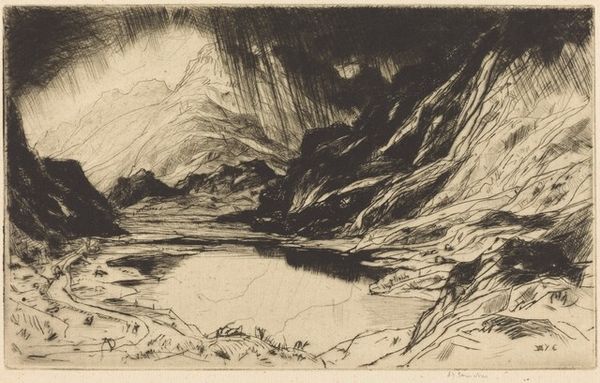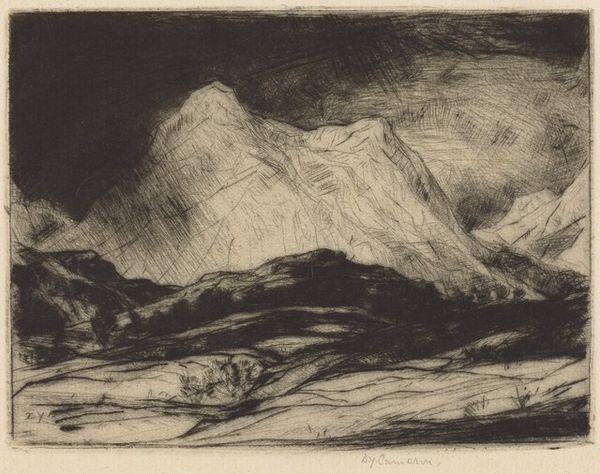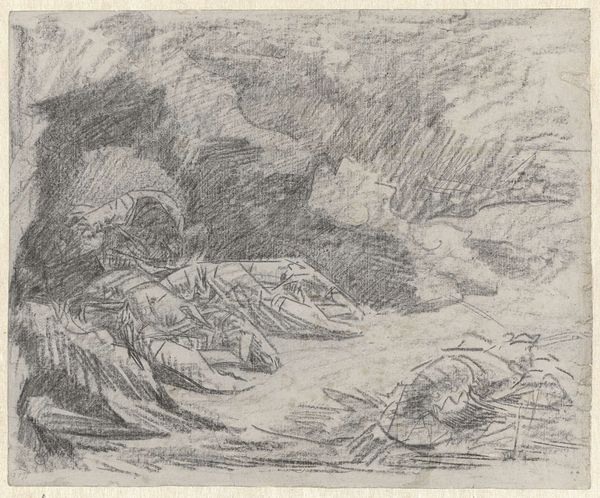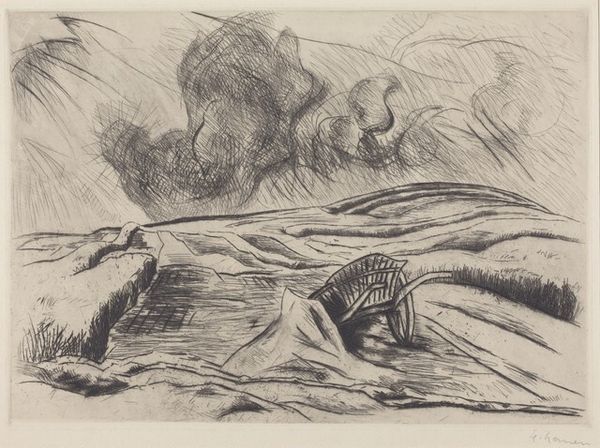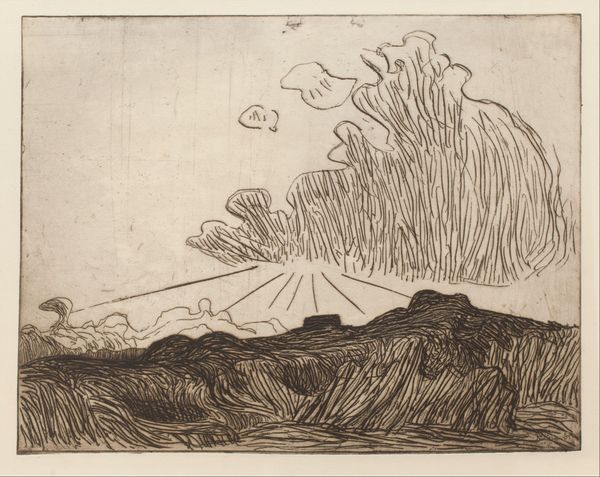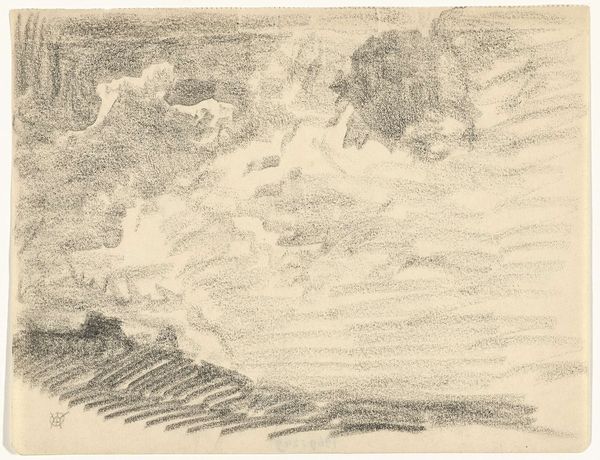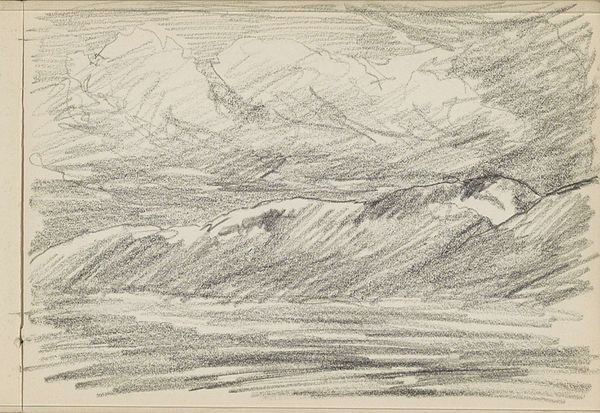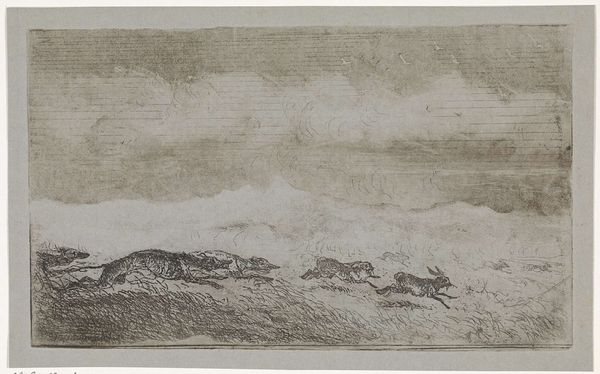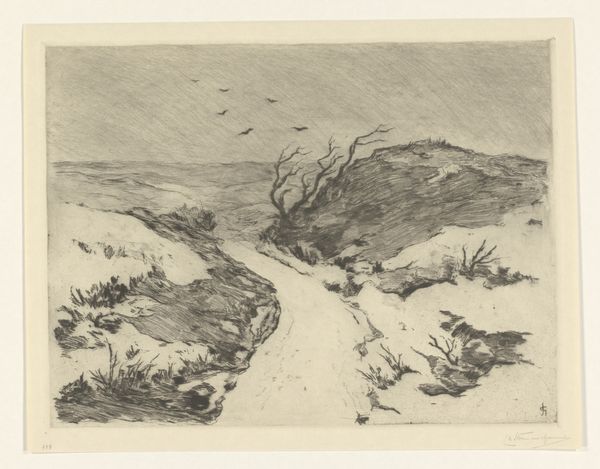
drawing, print, graphite
#
pencil drawn
#
drawing
# print
#
pencil sketch
#
landscape
#
charcoal drawing
#
figuration
#
pencil drawing
#
graphite
Dimensions: image: 260 x 356 mm sheet: 298 x 404 mm
Copyright: National Gallery of Art: CC0 1.0
Curator: This is Lily Schierenberg Converse's "Mexican Storm," a print estimated to be from the 1940s. It's rendered in graphite or charcoal, capturing a powerful landscape. Editor: My first thought is, "Wow, drama!" You feel that wind, right? The tree’s practically bending double, and that lone rider looks tiny, about to be swept away. Curator: It's evocative, indeed. Consider the social climate of the time. The print was created during or just after the end of World War II, a period marked by widespread anxiety and displacement. The dramatic storm could be read as a reflection of global turmoil, a metaphorical tempest impacting even seemingly remote locales. Editor: I love how the artist uses these frantic, scribbled lines to give that feeling of total chaos, but somehow everything is balanced so perfectly in the composition. You've got the dark looming mountains contrasting with the light hitting the foreground, giving it real depth. Curator: Precisely. Converse uses a traditional landscape subject, yet infuses it with contemporary concerns. We might explore this in relation to Mexicanidad, questioning what “Mexican” really meant and to whom it belonged in an era marked by shifting political and cultural landscapes, even amidst seemingly universal experiences. Editor: It’s funny, you know? The small figure, he almost gives me a sense of hope. Even in the face of this huge, turbulent event that could be seen to represent everything so heavy going on at the time, this tiny figure continues on his journey. He persists. Curator: An intriguing interpretation. Perhaps, within that lone rider lies a subtle commentary on resilience, agency, even resistance. The historical context helps enrich our understanding of how such images become laden with sociopolitical meaning. Editor: It's a stark, beautiful image, isn't it? Makes you feel tiny, but strong somehow. Curator: It serves as a poignant reminder of the interconnectedness of art, history, and our own lived experiences within broader societal structures.
Comments
No comments
Be the first to comment and join the conversation on the ultimate creative platform.
